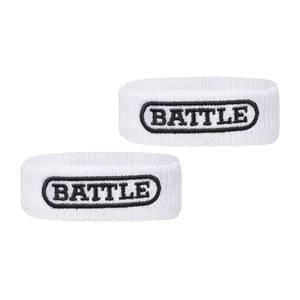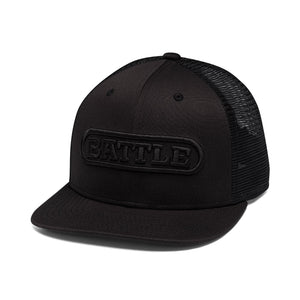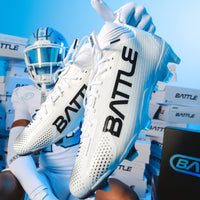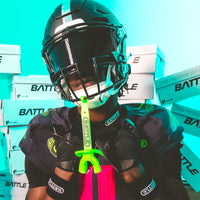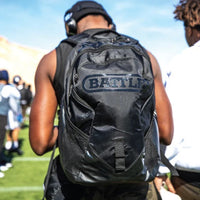Your mouthguard might be small, but it plays a big role in keeping your teeth, jaw, and smile protected every snap. Whether you're grinding it out in full pads or leading the team with a clean hit, your mouthguard absorbs impact, reduces injury risk, and helps you stay game-ready. But like any piece of equipment, it has a lifespan.
So, when is it time to replace your mouthguard? If it’s worn out, uncomfortable, or just plain gross, it’s probably not doing its job. Here are 7 clear signs that you need a new football mouthguard —and why paying attention to these signs is important for your oral health and on-field performance.
1. Visible Wear and Tear
Football is physical. Over time, that wear shows up in your gear —especially in football mouthguards.
Look for Cracks, Tears, or Fraying Edges
Cracks, splits, and frayed edges are clear signs that your mouthguard’s material is breaking down. These damages reduce shock absorption, which means your teeth and jaw take more of the hit. If your guard looks chewed up or thin in spots, don’t wait, it’s time to replace.
Watch Out for Thinning or Flat Spots
Even without visible tears, you might notice flat spots or areas that feel thinner than the rest. This is especially common in athletes who grind their teeth under stress or in game situations, similar to how people experience teeth grinding at night.
Just like a night guard used for bruxism, your football mouthguard needs to maintain consistent material thickness to protect your bite and prevent damage.
2. Changes in Fit
A proper fit is what makes your mouthguard effective. If it’s moving around or hard to keep in place, it’s no longer offering the protection you need.
Loose or Shifting Mouthguards
If you’re constantly adjusting it mid-play or it feels like it’s about to fall out when you talk, that’s a sign your mouthguard has lost its shape. Over time, the material can warp, especially with heat exposure or improper care.
Discomfort or Difficulty Breathing/Speaking
A comfortable mouthguard should feel secure without making it hard to breathe or call plays. If you notice discomfort, gagging, or trouble talking, that’s a sign it’s no longer molded properly to your teeth and bite. In these cases, it’s important to replace your mouthguard before it puts you at risk of injury.
3. Unpleasant Odors or Tastes
Even with regular cleaning, mouthguards can develop a smell that just won’t go away.
Signs of Bacterial or Fungal Growth
If your mouthguard smells bad or has a lingering taste even after washing, it's probably packed with bacteria or fungi. This isn’t just gross, it’s a risk to your oral health. According to many dentist recommendations, a foul-smelling or bad-tasting mouthguard is no longer safe for use.
Many athletes overlook how to clean a football mouthguard properly, which can lead to premature wear and potential oral health issues. To ensure a healthy and clean fit, follow a routine of rinsing after each use and storing in a ventilated case. But if the stench sticks around, it’s time to replace your mouthguard.
4. Discoloration
Color changes might not seem like a big deal — but they could mean something more serious.
Color Changes Can Indicate Bacterial Presence
If your mouthguard has turned yellow, brown, or gray, or you see unusual spots, it could mean bacteria have penetrated the material, or it’s simply worn out. Much like a night guard for teeth grinding, a discolored guard can be a sign that the product is degrading and no longer safe to use.
Don’t take chances. If you wouldn’t keep something that looked like that in your mouth while you sleep, you shouldn’t use it during a game either.

5. Recent Dental Changes
Mouthguards are designed to fit your current smile. But your teeth and jaw can change over time — especially for younger athletes or patients with braces.
Braces, Lost Teeth, or Bite Shifts
If you've had orthodontic work, lost a tooth, or your bite has shifted, your current mouthguard won’t fit properly anymore. A bad fit doesn’t just feel wrong, it also won’t protect your teeth during impact.
In these cases, consult your dentist and get a new mouthguard custom-fit to your current bite. It’s the only way to ensure consistent safety.
6. Reduced Performance on the Field
If your mouthguard isn’t working, it’s not worth keeping.
Less Impact Protection or Dental Damage
Have you chipped a tooth or felt more sore after a hit — even while wearing your guard? That’s a clear sign it’s no longer effective. A mouthguard that doesn’t absorb impact properly puts your teeth and jaw at risk — something no athlete can afford.
Regularly assessing your gear’s effectiveness is important for long-term oral health and injury prevention.
7. It’s Been Too Long
Replace Every 6–12 Months or After Each Season
Most dental professionals and sports gear experts recommend replacing your mouthguard every 6–12 months, or after each football season. Over time, even if it looks fine, wear and tear from usage and cleaning can make it less effective.
If it’s been more than a year, or you’ve used the same one for multiple seasons, it’s time to upgrade. Just like cleats wear down and shoulder pads get swapped out, your mouthguard needs to be refreshed to maintain performance.
Now, if your current setup isn’t cutting it, it might be time to rethink the whole lip guard vs. mouthguard situation — and level up your protection.
Replace Your Mouthguard with Battle Sports
Recognizing the signs of wear is the first step. The next? Replacing your old guard with one that’s built to work.
At Battle Sports, our football mouthguards are designed for impact protection, airflow, and style.
From classic mouthguards to lip guards to match with the rest of your football drip, our gear is built to fit comfortably, resist bacterial buildup, and keep your teeth protected on every down.
Whether you’re suiting up for your first season or grinding through playoffs, don’t wait until something goes wrong. Replace your mouthguard with Battle football gear and hit the field with confidence.


